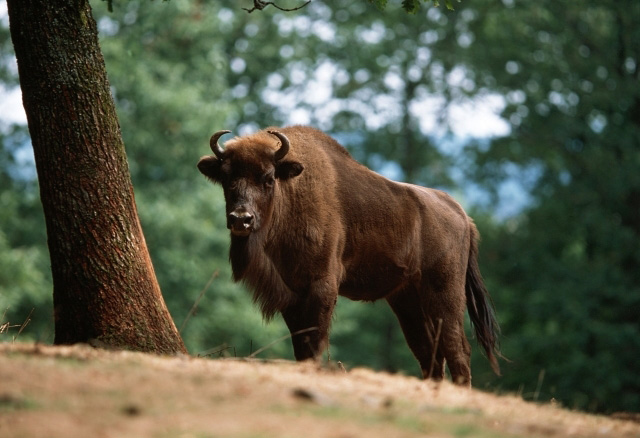EUROPE’S WILD MAMMAL POPULATIONS ARE MAKING A COMEBACK THANKS TO CONSERVATION EFFORTS
EUROPE”S WILD MAMMALS ARE MAKING A COMEBACK THANKS TO CONSERVATION EFFORTS
Long-term monitoring of wildlife populations is difficult. The methods used and the quality of estimates can change and improve over time. In this assessment, (from OurWorldInData.org) for each mammal, researchers drew on published studies that assessed the most recent population estimates, and the change over time. These are population estimates that are included in the Living Planet Index.
ACROSS THE WORLD WE FIND EXAMPLES OF SUCCESSFUL CONSERVATION PROGRAMS
The European bison is the continent’s largest herbivore. It was once abundant across the region. Archaeological evidence suggests that the bison was widespread, stretching from France to Ukraine, down to the tip of the Black Sea. The earliest fossils date back to the Early Holocene period – around 9,000 BC.
Bison populations steadily declined over millennia, but experienced the most dramatic decline over the last 500 years. Deforestation and hunting of this iconic mammal nearly drove it to extinction. Look at old cave paintings and we find that hunters had etched bison next to bison in charcoal. They had gone extinct in Hungary by the 16th century; in Ukraine by the 18th century. And by the early 20th century they had gone completely extinct in the wild, with only tens of individuals kept in captivity.
The overhunting of the bison is no outlier. It’s part of a long history. Look at the size of mammals through millions of years of human history and we find that they get smaller and smaller. Humans preferentially hunted the largest mammals, often to extinction.
This is still the case today. It is the largest mammals that are most threatened by hunting.
But it doesn’t have to be this way, and the bison shows it. The European bison has made an impressive comeback over the last 50 years. Successful conservation efforts have seen their numbers rebound. Europe is now home to more than 2500 of them.
It’s not the only one. Across the world, we find examples of successful conservation programs that have restored animal populations.
Below, OurWorldInData’s Hannah Ritchie looks at the challenge in mammal populations across Europe. Many species are making a comeback. Once on the brink, iconic animals such as the European bison, Brown bear, and elk are thriving once again.
MOST MAMMALS ACROSS EUROPE HAVE MADE A COMEBACK OVER THE LAST 50 YEARS
By the first half of the 20th century, many of Europe’s mammals had been reduced to just a fraction of their historical levels. Millennia of hunting, exploitation, and habitat loss had forced them into decline. Many had been wiped out completely.
But most mammal populations have seen a dramatic increase over the last 50 years.
In 2013, a coalition of conservation organizations – including the Zoological Society of London; Birdlife International; and Rewilding Europe – published a report on how mammal populations across Europe had changed since 1960. They looked at the change in populations of 18 mammal species. The results are shown in the chart.
There are more than 30 times the number of European bisons alive today than there were in 1960.
There are more than twice as many Brown bears. Three times as many Eurasian elks. Five times as many Red deer.
The Eurasian beaver has made the most remarkable recovery. It’s estimated to have increased by 140-fold since 1960. There were only around 2400 beavers left in Europe in 1960. Today there are more than 330,000. This study only included data for studied countries in Europe. When we take Eurasia as a whole, it is estimated that there are well over one million beavers.
All species but one – the Iberian lynx – have significantly increased in numbers. Despite its 50-year decline, there is recent positive news for the Iberian lynx. Over the last decade it has been making a remarkable recovery. So much so that the IUCN moved it from Critically Endangered to Endangered on the Red List in 2015.
Read full article from BrightVibes.
